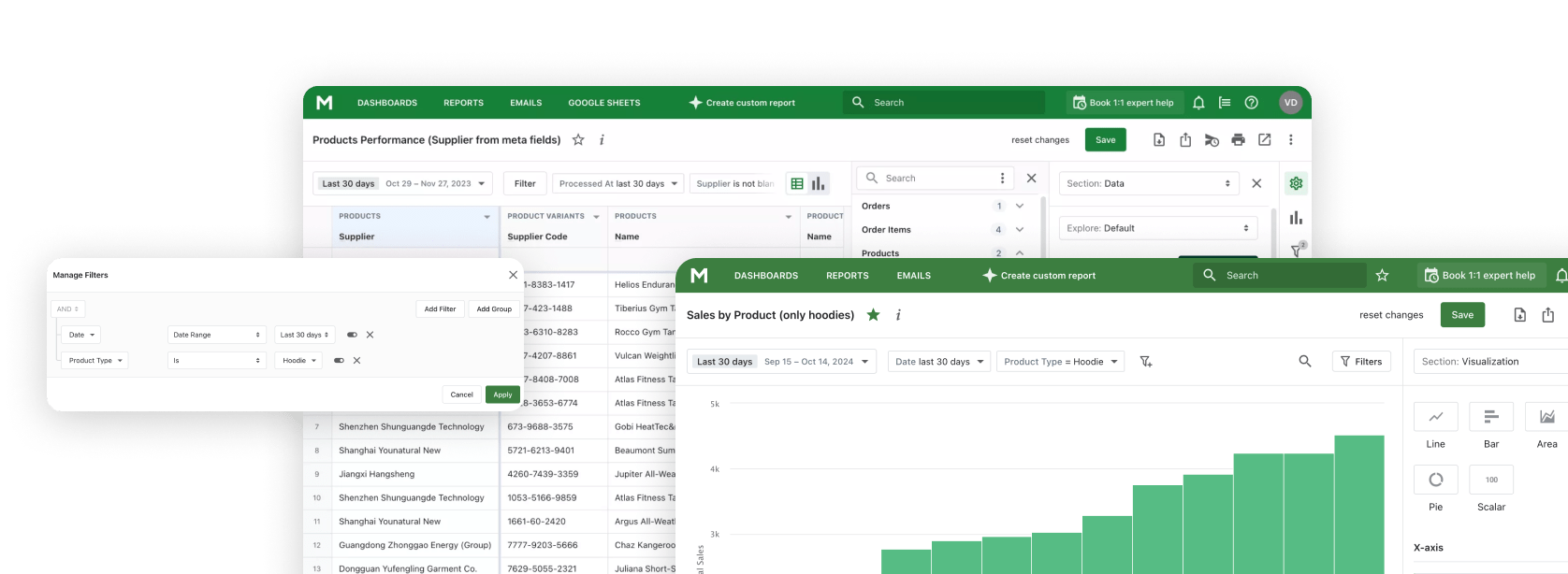In Shopify, you can use the "Customer Tags" feature to tag customers with certain labels or tags, such as "eBay", "VIP", "Messenger". You can then use these tags to segment and filter your customer data in various ways, including generating reports.
The major benefits of tag-based reports for Shopify
There are several reasons why you might want to generate a report on sales by customer tags:
-
Understanding customer behavior.
By seeing which customer tags are associated with the most sales, you can gain insight into which types of customers are most valuable to your business. This can help you make decisions about how to target different groups of customers and allocate your marketing budget.
-
Identifying trends.
By tracking sales by customer tags over time, you can identify trends in customer behavior. For example, you might notice that customers who were tagged as "VIP" in the past are now making less frequent purchases. This could indicate that you need to adjust your strategy for engaging these customers.
-
Personalized marketing.
By segmenting your customers based on their tags, you can create more personalized marketing campaigns that are tailored to specific groups of customers. This can help you increase customer engagement and improve conversion rates.
-
Analyzing customer lifetime value by tag.
Customer tags can also be used to analyze the lifetime value of different customer segments. This information can be used to understand which types of customers are the most profitable over time and help you determine where to focus your retention efforts.
Customer Tags and Customer Segmentation
Customer tags and customer segmentation are related concepts that can be used together to better understand and target specific groups of customers.
Customer tags are a way to label and group customers based on specific characteristics. For example, you might use tags to label customers as "VIP," "Repeat Customer," or "High Lifetime Value." These tags can be used to segment customers in a variety of ways, such as by purchase history or by demographics.
Customer segmentation is the process of grouping customers into distinct categories based on certain characteristics. These characteristics can include demographics, purchase history, or behavior. Customer segmentation allows businesses to create targeted marketing campaigns and customize the customer experience for different groups of customers.
When you use customer tags, you can segment your customers efficiently and target your specific customer segments to better understand their behavior. For example, you might use the customer tags to filter your customer data to see which tags are associated with the most sales, or to create targeted email campaigns for different groups of customers.
Variations of Sales by Customer Tag report for Shopify
There are several variations of the sales by customer tag report that can provide different insights into customer behavior and sales trends.
Sales by tag over time
This report shows how sales for each customer tag have changed over time, allowing you to identify trends in customer behavior and make decisions about how to target different groups of customers.
Sales by tag and product
This report breaks down sales by customer tag and by product, allowing you to see which products are most popular among different groups of customers.
Sales by tag and channel
This report breaks down sales by customer tag and by sales channel, such as online or in-store. This report can help you understand how different customer segments interact with your business across different channels.
These are some examples of variations, but you can create other variations of the Sales by Customer Tag report according to the data and information you have. The important thing is to be able to get insights about the behavior and preferences of your customers and make decisions to improve their experience and grow your business.
Automate your Shopify inventory reports
With the help of Shopify inventory apps or other solutions, you can set the metrics you want to track and get regular reports automatically generated for you. You can analyze yearly and monthly inventory reports, as well as get daily snapshots for detailed assessment.
The Mipler reporting app provides you with plenty of customization opportunities so that you can adjust what types of inventory reports you need and what parameters to include in each one.
